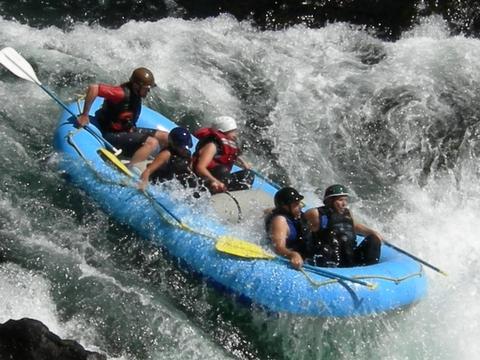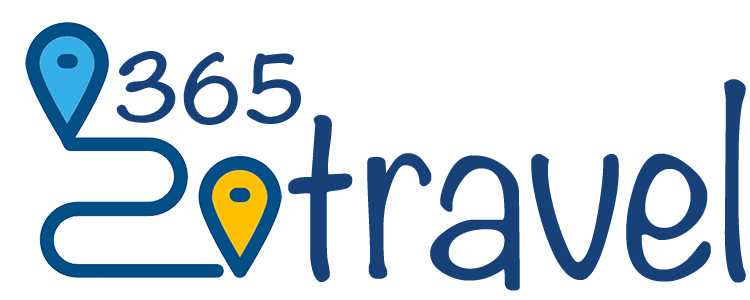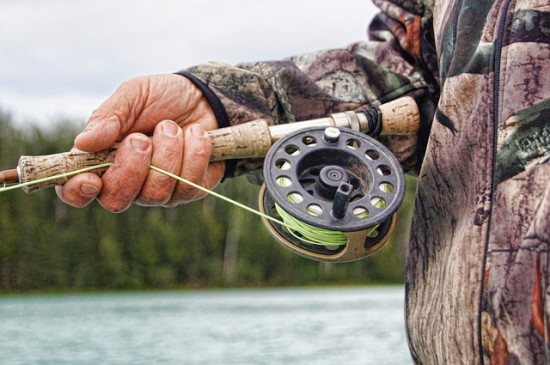Washington State is to white water rafters as California is to surfers, offering numerous river rafting opportunities from Class 1 (newbies and children) to Class 5 (extreme sports). The most popular Pacific Northwest rivers are the Skagit, Tieton, Methow, White Salmon, Skykomish and the Wenatchee – all within a few hours of Seattle.

- River Raftingjordan_n22 / Foter / CC BY-NC-SA
Rafting is commonly referred to as “whitewater rafting” because it is performed on rough water, or “whitewater”, in order to keep the raft moving quickly through challenging conditions to provide the adrenaline rush many rafters seek. Rafting is performed in durable inflatable boats constructed from rugged high strength fabric coated with PVC, urethane, Neoprene or Hypalon (synthetic rubbers), and featuring a number of independent air chambers for added safety. The typical raft varies from 11 feet long and 6 feet wide (seats 4) to 20 feet long and 8 feet wide (seats 12). Their size and low center of mass make them quite stable compared to a craft like a canoe or kayak.
While whitewater rafting is often thought of as a demanding or even potentially dangerous outdoor activity, there are actually varying levels of difficulty, and six classifications of whitewater:
Class 1: Small rough areas. No paddling skill required.
Class 2: Some rough water, possible rocks and small drops. Basic paddling skills required.
Class 3: Whitewater, medium waves, 3 to 5 foot drops. Requires experienced paddlers.
Class 4: Whitewater, large waves, long rapids, rocks, possible drops. Advanced whitewater experience required.
Class 5: Whitewater, large waves and rocks, continuous rapids, possible drops. Expert level required.
Class 6: Impassable. Don’t even think about it. On occasion, a Class 6 rapid has been run, and reclassified to a Class 5. This speaks to the growing knowledge, experience and skills of expert whitewater rafters.
The state of Washington offers such a smorgasbord of awesome rafting opportunities it’s hard to know where to start. In spring and early summer, try the Methow River, a tributary of the Columbia whose banks are swollen by snowmelt in the spring. The Methow weaves through the cliffs, forests and desert of the beautiful Methow valley in temperate Eastern Washington, where spring comes early.
Dropping over 500 feet in less than 20 miles, it progresses from Class 2 to Class 4, offering easy paddling at the beginning, tumbling into the gorge and into dozens of ever bigger and more challenging rapids, with quiet pools in between to allow you to catch your breath. Take advantage of these opportunities to look around for the local wildlife, including deer, eagles, beaver and otters.
Just an hour from Seattle, the Skykomish River is primarily a Class 3 to 5, with over a half-dozen jaw dropping, heart pounding sections of whitewater rapids. At the well-known Boulder Drop, the water courses around boulders the size of houses. Other unforgettable Skykomish rapids include Aquagasm, Bonsai, Fisherman’s, Lunch Hole and Railroad. There is also a gentler Class 1 section of the river that is well suited to a family-friendly afternoon float through the picturesque Cascade Mountains. The season is April to July, but the Skykomish is at its wildest in May and June.
Rafting the White Salmon River is not for the inexperienced or the faint of heart. Flowing through the Columbia River Gorge, it boasts incredible mountain views and thick forests. Rafting trips on the White Salmon spiral through the canyon and a series of exhilarating rapids and falls, and end in an optional 10-foot waterfall. The White Salmon’s best season for rafting (and Bigfoot sightings) is April to September. The fun starts in Husum, Washington, near Portland, Oregon.
The Wenatchee River is one of America’s best known rafting rivers, and Washington’s most popular. The area is hot and dry, and the Wenatchee can be rafted from April to October. It starts in the Eastern Cascades foothills and winds its way through a peaceful semi-rural setting, including orchards. Strong rapids with funky names like Rock ‘N Roll, Gorilla Falls and Drunkard’s Drop make this a Class 3 raft in many places.
Whitewater rafting enthusiasts flock to the Tieton River in Yakima in the fall, when water is released from the Tieton Dam. The Tieton River is one of the steepest navigable rivers in Washington, offering challenging and continuous Class 3 and 4 whitewater thrills through thick forests.
Skagit River rafting runs year round. The Lower Skagit is considered a “mellow”, Class 1 meandering scenic trip, while the Upper Skagit (Class 2 and 3) runs more swiftly, containing some whitewater, and some thrilling S curves through the breathtaking North Cascade National Park. The Skagit River is just a couple of hours from Seattle.
Whitewater rafting is “like driving a car on ice,” according to Kristen Finstad, who trains aspiring river rafting guides in the Sequoia National Forest in California. Always raft with experienced guides who are familiar with the river and any potential dangers such as fallen trees, submerged rocks, areas of turbulence and flooding, and of course waterfalls. It’s vital that a rafting guide know how to read the currents and avoid obstacles, and know exactly what to do if, for example, your raft gets hung up on a boulder.
A reputable rafting company will begin every trip with a safety presentation educating customers about how to stay safe in quickly moving waters (hint – alcohol and rafting do not mix) and what to do in the unlikely event you end up going for an unplanned swim. Don’t be surprised if you are instructed never to stand up in water that is more than ankle deep, because of the danger of “sieves” if there is a current.
Experienced whitewater rafters speak their own language, talking matter-of-factly about sieves, sweepers, holes, pillows, eddies, undercut rocks and sifts or strainers. Then there’s the fun stuff: punching, high siding, rock splats, nose dunks, pirouettes, surfing and troying.
There are state legislated regulations regarding rafting safety that cover the certification of rafts and operators, and outline necessary equipment and procedures. Some states regulate the number and hours of operation of river rafts in the interests of conservation of the natural habitat. All certified river guides must be trained in First Aid and CPR, and many are also certified in White Water Rescue or Wilderness First Aid.
A responsible rafting company will focus on safety first, and then fun. They’ll employ only well-trained and experienced guides; provide customers with good safety gear such as flotation devices, wetsuits and booties, and use only high quality equipment. That leaves your only worry making the most out of every precious minute of your mind-blowing whitewater adventure.
[box]Chad Williams is a travel consultant. He also enjoys sharing his stories and insights through blogging. Visit the BestQuote Travel Insurance for travel insurance information.[/box]

